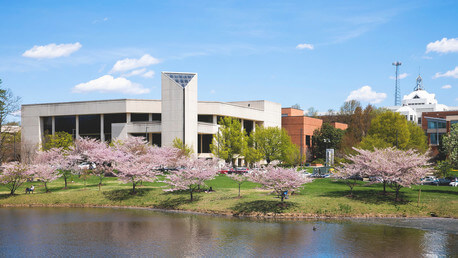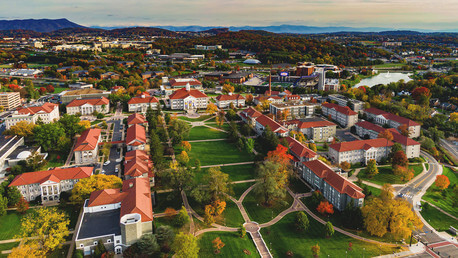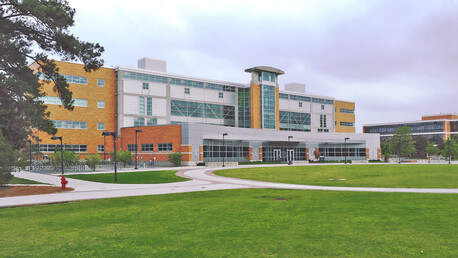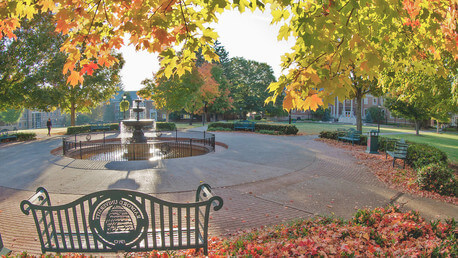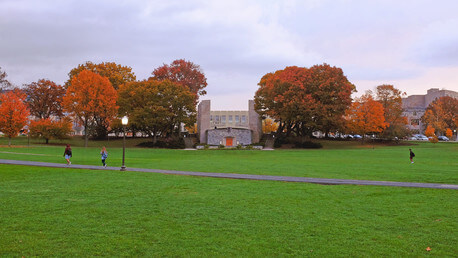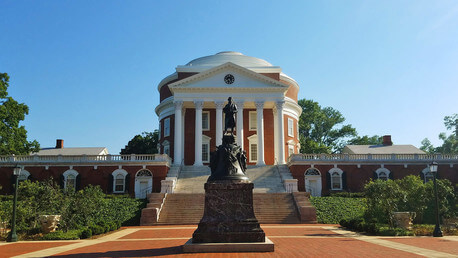Tuition, Cost & Aid
Affordability and Cost
Average Net Price Average net price for full-time, first-time degree/certificate-seeking undergraduates paying the in-state or in-district tuition rate who were awarded grant or scholarship aid from federal, state or local governments, or the institution. Other sources of grant aid are excluded. Aid awarded anytime during the full aid year is included.
Average net price is generated by subtracting the average amount of federal, state or local government, or institutional grant and scholarship aid from the total cost of attendance. Total cost of attendance is the sum of published tuition and required fees (lower of in-district or in-state), books and supplies and the weighted average room and board and other expenses.
Average net price is generated by subtracting the average amount of federal, state or local government, or institutional grant and scholarship aid from the total cost of attendance. Total cost of attendance is the sum of published tuition and required fees (lower of in-district or in-state), books and supplies and the weighted average room and board and other expenses.
$10,005
Average Net Price By Family Income
Tuition
| In-State Tuition In-state tuition is the tuition charged by institutions to those students who meet the state's or institution's residency requirements. In-district tuition is the tuition charged by the institution to those students residing in the locality in which they attend school and may be a lower rate than in-state tuition if offered by the institution. | $5,703 |
| Out-of-State Tuition Out-of-state tuition is the tuition charged by institutions to those students who do not meet the state's or institution's residency requirements. Out-of-district tuition is the tuition charged by the institution to those students not residing in the locality in which they attend school. | $11,786 |
Additional Costs
| Books and Supplies | $1,800 |
| Tuition Payment Plan | Yes |
Financial Aid: visit page
Aid & Grants
Students Receiving Gift Aid Percent of undergraduate students awarded federal gift aid. Federal gift aid includes any grant or scholarship aid awarded, from the federal government, a state or local government, the institution, and other sources known by the institution. Students Receiving Grants Percent of undergraduate students awarded grant aid. Grant aid includes any grant or scholarship aid awarded, from the federal government, a state or local government, the institution, and other sources known by the institution. Students receiving state aid Students receiving federal aid
21%
Average Aid Per Year
$8,876
21%
Average Federal Grant Aid Per Year
$7,506
Average Institution Grant Aid Per Year
$1,357
40%
Average State Grant Aid Per Year
$1,712
59%
Average Federal Grant Aid Per Year
$7,506
Student Loans
Students Borrowing Loans Loans to students - Any monies that must be repaid to the lending institution for which the student is the designated borrower. Includes all Title IV subsidized and unsubsidized loans and all institutionally- and privately-sponsored loans. Does not include PLUS and other loans made directly to parents.
15%
Average Loan Amount Per Year
$4,779
Students receiving federal loans
15%
Average Federal Loans Per Year
$4,710
Average Other Loans Per Year
$7,831
Average Debt at Graduation The median federal debt of undergraduate borrowers who graduated. This figure includes only federal loans; it excludes private student loans and Parent PLUS loans.
$6,809
Loan Default Rate
10%
US National: 7%
Median Monthly Loan Payment The median monthly loan payment for student borrowers who completed, if it were repaid over 10 years at a 5.05% interest rate.
$105
What Students Are Saying
The best part about NVCC is the price. You really don't pay a lot for what you get. You save money while you take the classes that you need to transfer over to whatever college you plan to go to and continue there where you had left off!
Michelle from CENTREVILLE, VA
Pretty much every other review hit this on the head. NOVA is very inexpensive compared to other schools in the area (George Mason...). There is not a drop off in the quality of teaching at all. All of the professors I've encountered in my two years studying at NOVA have all been leaders within their industry or current/former professors at other four-year colleges in the area (American, Catholic, George Mason).
Kyle from Clifton, VA
Did I mention the great tuition? It has to be one of the biggest advantages of being at Northern Virginia Community College! Students take the same classes at NOVA as they would at other, more pricey colleges; these classes also transfer easily from NOVA to almost any college in Virginia. This is especially useful when the student is looking to transfer while following the guaranteed admissions agreement between NOVA and many other colleges.
Tsz from Reston, VA
since this is a junior college, the tuition is low. plus, nova is located in northern virginia so the students are constantly exposed to the cultural sophistication of the area while being taught by worldly professors.
Brian from Bealeton, VA
You will save a lot of money by choosing to take your first two years of college at Northern Virginia Community College. You will also gain a Associate's degree before pursuing your Bachelors Degree, which is also a great help in your academic career.
Felicia from Stafford, VA


